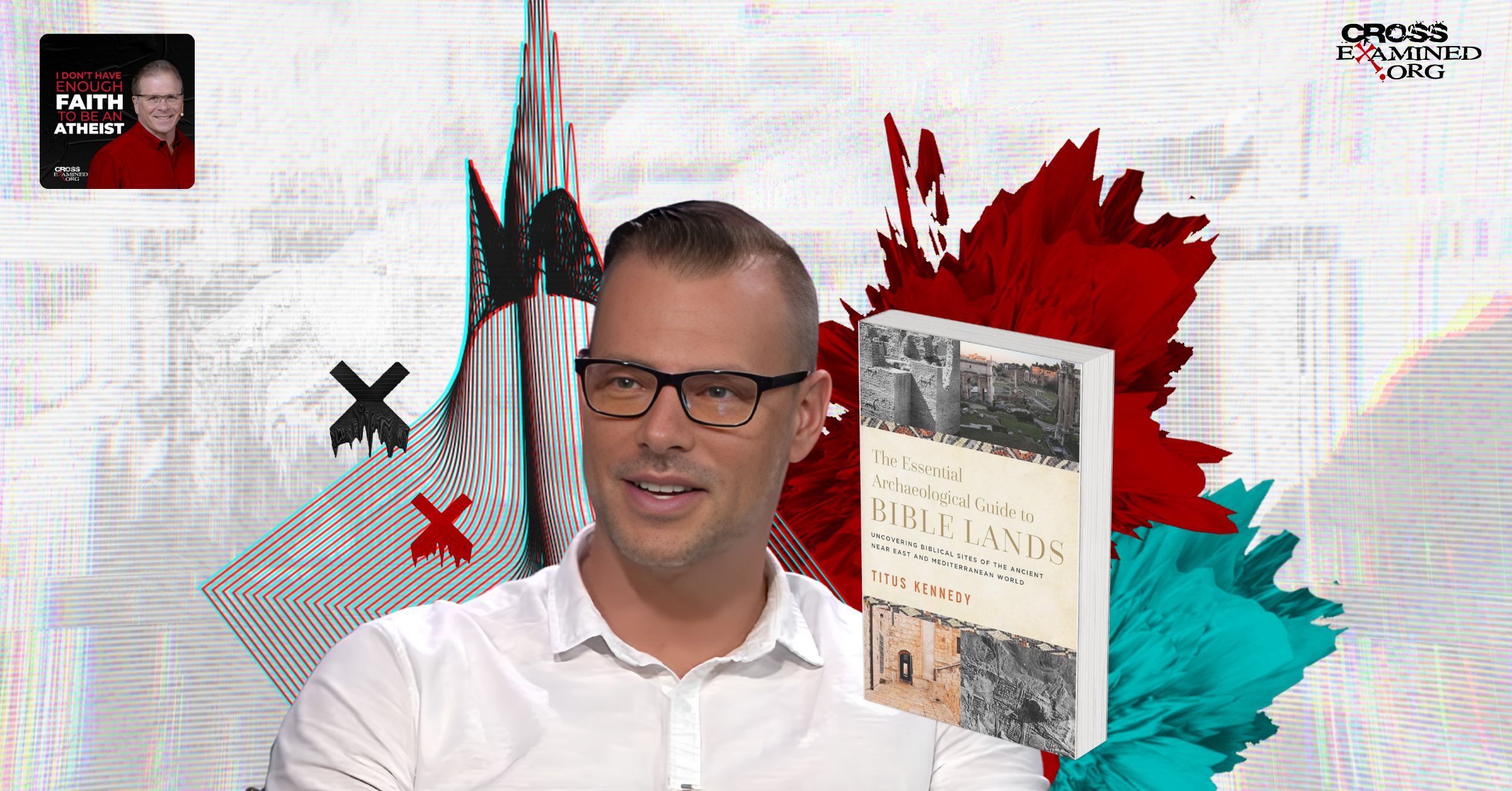
What historical evidence is there for people like Peter, Simon of Cyrene, Pontius Pilate, Jesus, Caiaphas, and other key figures in Jesus’s crucifixion? Seven people who had something to do with the trial of Jesus have been found through archaeology! Moreover, excavations in Israel have unearthed numerous archaeological finds that corroborate precisely what’s recorded in the Bible. But what if excavations in Israel are just the tip of the iceberg? Beyond Israel, has the wider ancient world yielded artifacts that shed light on the biblical narrative? And what about Jesus? Is there any archaeological evidence that leads us back to Him?
For this midweek podcast episode, Frank invites author and field archaeologist, Dr. Titus Kennedy, to talk about his brand-new book ‘The Essential Archaeological Guide to Bible Lands: Uncovering Biblical Sites of the Ancient Near East and Mediterranean World.’ In the book, Dr. Kennedy explores the various archaeological discoveries across the entirety of the ancient world that provide evidence for the historical accuracy of the Bible. During the episode, Frank and Titus and answer questions like:
- How did Josephus become a historian for the Romans?
- How did the emperor Hadrian inadvertently leave a trail of evidence for Christianity?
- How much of the Holy Land has actually been excavated?
- What evidence suggests that the Israelites were in Egypt during the time of the Exodus?
- Minimalist vs. maximalist archaeologists – what’s the difference?
- Has archaeology ever contradicted the historical record of the Bible?
- What is the archaeological evidence for Jesus?
Recognizing the great significance of the evidence that has been located in places like North Africa, Rome, Anatolia, and Mesopotamia, Titus has written this book as a modern resource for an area of archaeology that has gone relatively untouched for the past 30 years! This episode barely scratches the surface of what’s uncovered in the book so be sure to grab your copy of ‘The Essential Archaeological Guide to Bible Lands.’ And if you desire to go even deeper in exploring biblical archaeology, enroll in the brand-new online course called ‘Reasons for Faith‘ where Dr. Kennedy will serve as one of the LIVE instructors along with Dr. Stephen Meyer!
To view the entire VIDEO PODCAST be sure to join our CrossExamined private community. It’s the perfect place to jump into some great discussions with like-minded Christians while simultaneously providing financial support for our ministry.
You can also SUPPORT THE PODCAST HERE.
Buy Dr. Titus Kennedy’s new book: https://a.co/d/hBSZQS5
Join Dr. Titus Kennedy LIVE in ‘Reasons for Faith’!: https://bit.ly/3U0p63V




